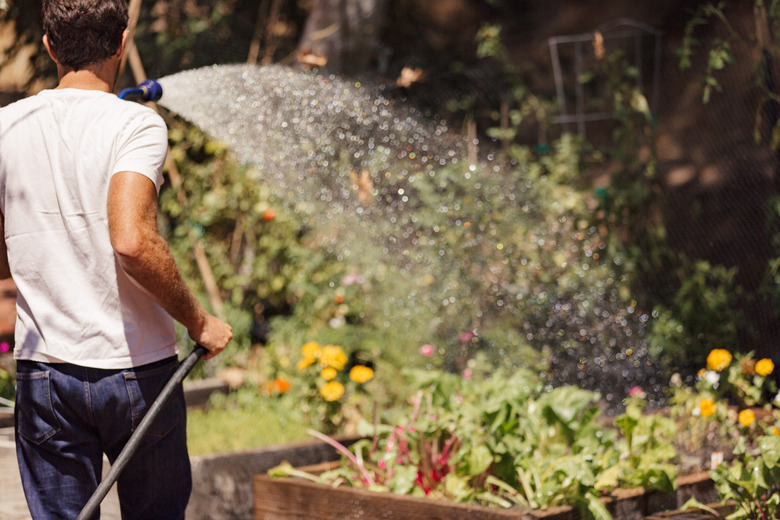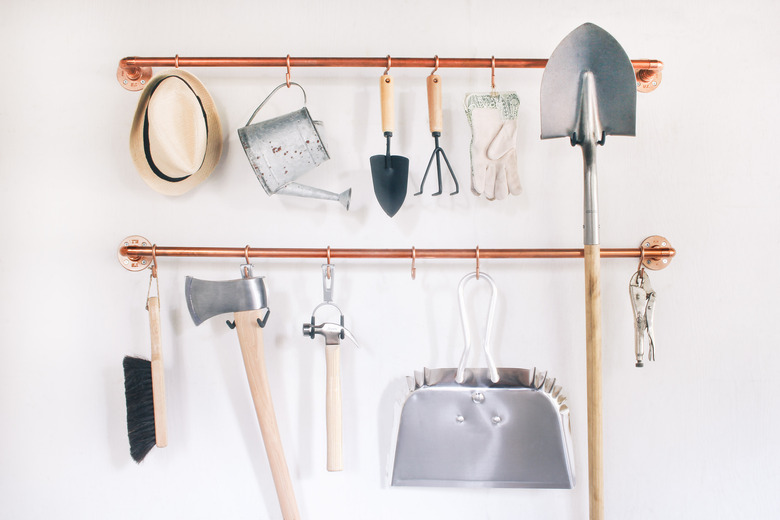What You Really Should Be Doing To Get Your Garden Ready For Spring
When spring is right around the corner, you better believe that your garden is calling. For attention. From you. And although you can hardly wait to sow seeds and watch new plants peek out of dark soil, you've got work to do first. Prep work is essential for getting your garden ready for spring.
Tool Rehabilitation
Tool Rehabilitation
Unless you are different from most gardeners, you've given your garden tools the winter off, relaxing (and sometimes rusting) in the garage. Their moment in the sun has returned, so bring them out and get them ready for work.
Bring any gas-powered tools and equipment into the shop for tune-ups and maintenance. Or, if you are handy about these things, sharpen your own mower blades, replace aging spark plugs, top off oil, drain off gas, and adjust the motors.
Clean hand tools with soap and water and a tough brush. Use mineral spirits on wood handles to prevent splintering. Use steel wool to remove rust on tools, and then sharpen the blades with an appropriate sharpening stone. Follow up by coating tool blades with a light oil. Give the same treatment to shovels and other digging tools.
Clean Up, Prune, and Trim
Clean Up, Prune, and Trim
Just like your living room collects odd objects over time that need a good Marie Kondo-style sorting, your garden's mess will also surprise you. Where did all the junk come from? The winds of winter drop leaves and limbs into garden paths and beds, and even blow the neighbor kids' toys over the fence, while weeds may have staged an undercover invasion. Here are two important things to do:
1. Clean beds and paths.
Now is the time for action. Start with flowerbeds, carefully removing debris, including dead annuals and forgotten veggies. Your spring bulbs will be spouting soon if they haven't yet begun, and it's easier to avoid stepping on them once detritus is removed. If you mulched in the fall, rake it off now.
Move on to garden paths and meadows, removing junk and raking. While you are out there, clean leaves and dirt off garden benches, tables, and chairs.
2. Prune and trim.
Take pruners to shrubs and trees. Remove any and all dead wood and broken branches. You can also trim and shape overgrown bushes and young trees, but skip those that bloom in spring. Pruning now will remove spring flowers.
If you didn't cut back ornamental grasses and perennials in the fall, do it now. Prune them all back to a few inches from the ground.
Many woody perennials (like lavender, artemisia, buddleia, and caryopteris) won't flower well in summer without end-of-winter pruning, so these will need to be trimmed in early spring. Begin as soon as you see new growth at the plant base.
Weed While It's Easy
Weed While It's Easy
Weeds are always trying to wiggle their way into your garden. Early spring is a great time to launch a preemptive strike with some proactive weeding. Why's that? Because weeds are just young seedlings in spring and the wet soil makes it easier to dislodge them, roots and all. Remember: do not toss weeds into the compost or you will be seeing them again sooner than you may think.
Divide Mature Perennials
Divide Mature Perennials
Spring is the ideal time for dividing clumping perennials, just after the plants emerge from the soil. These are plants that grow from thick underground roots (think bulbs, tubers, corms, and rhizomes) like hostas, lilies, and dahlias. Dividing the clumps provides more space for the roots to grow, and you can transplant the divisions to garden plots needing more vegetation. Don't worry that you'll disrupt growth; they are tough and recover quickly.
Plan Your Garden and Order Seeds
Plan Your Garden and Order Seeds
Take an honest look at how well the veggie garden did last year, what performed, what didn't; what your family ate and what you ended up giving to neighbors. Then revamp your garden plan, emphasizing crops you love to eat and trying new cultivars for those that didn't grow well.
Ask local master gardeners or experts at your garden store about what veggies are best for your location. You can do the same for flowering plants, picking new species to provide blooms all season. Remember to plan for taller plants to be in back of shorter ones so that they don't block the sun.
Ordering seeds now will stand you in good stead later. If you wait until the last minute, you'll have to take whatever is left.
Give TLC to Your Soil
Give TLC to Your Soil
If you haven't tested your soil in a while, do it in spring. If you need to amend the soil or add nutrients, early spring is the perfect time to do so. Usually your local garden store can help out with the testing, or tell you where to take your soil samples.
Once that is done, it's time to "frost" your garden beds in organic compost. Layer a few inches of compost over each bed, then work it in well to the top foot of soil. The added nutrients and organic material will keep your plants happy all summer long.

